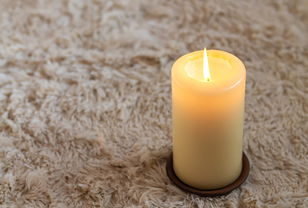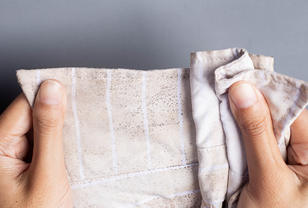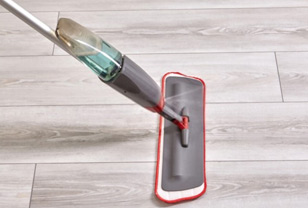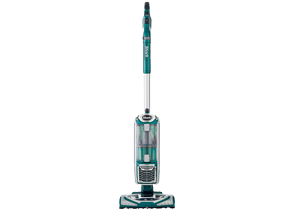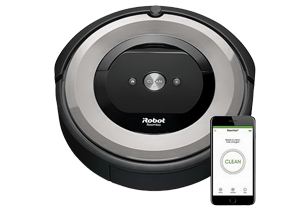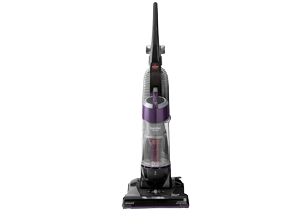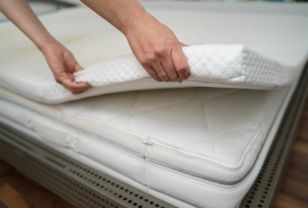How to Seal Laminate Flooring and Protect It Against Humidity
However, many instances may call for a sealant to fix your problem. The edges of your floor, for example, can benefit from a smaller gap between them and the wall. Sealing can do the trick here.
Read on to find out more about how to seal laminate flooring, including when you should and shouldn't do so.
Can You Seal Laminate Flooring?
Normally, you don't need to seal your laminate flooring. Manufacturers typically give these flooring boards a hard finish meant to last for the entire life of your floor. When the boards are installed, they flock tightly together to prevent water from seeping between them.
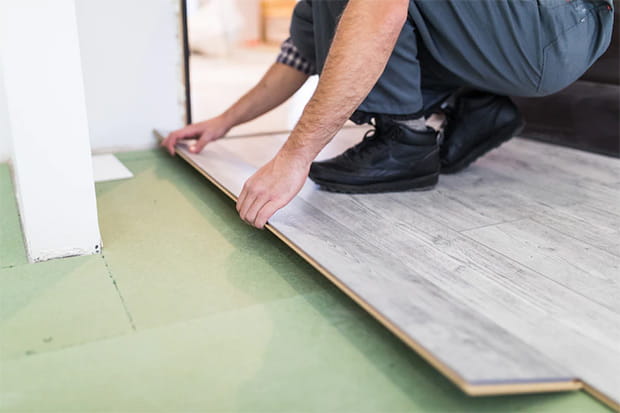
Laminate boards should already fit tightly together
There is hardly anything you can do better to seal those gaps and increase the water resistance of your laminate flooring. An extra coat isn't that good of an idea and can even do more harm than good.
Remember that most laminate products are floating flooring. They can resist impacts pretty well but can be prone to water and humidity. They are supposed to be slightly moved underfoot, and the gaps and seal joints are meant to be left intact.
Sealing the whole floor doesn't just void the warranty but also prevents the planks from adapting to the environmental conditions of your room.
➜ RELATED: How to Fix Scratches on Laminate Floors: The Quick & Easy Ways
What Sealing Can And Can't Do
It is normal for new users to consider adding a coat to their laminate flooring and adding another layer of protection. But with a good understanding of its finish, you will know why that practice isn't popular among experts and professionals.
For starters, laminate isn't natural wood, no matter how well it can mimic the look and feel of this natural material. Instead of hardwood, laminate boards feature a fiberboard core that has been covered by aluminum oxide and melamine resin to make them look just like wood.
Still, their surface layer is just plastic resin. So there is a reason professionals don't recommend sealing it because there is nothing to seal in the first place. This stands in stark contrast to hardwood floors, which need sealants to protect their surfaces.
The laminate flooring waterproof sealer can't penetrate the surface layer to form strong bonding. As a result, it will stay on top of its finish and become easy to peel off. This just makes your laminate flooring more slippery.
Besides the surface, sealing isn't good for the core, either. Many people want to use a waterproofing sealant to fill the gaps between laminate boards and protect the core layer inside. Unfortunately, this idea can backfire easily.
The sealant may soak inside the boards, swelling the fiberboard and producing lifting and curling at their edges. The irony is these issues are what you can avoid in the first place.
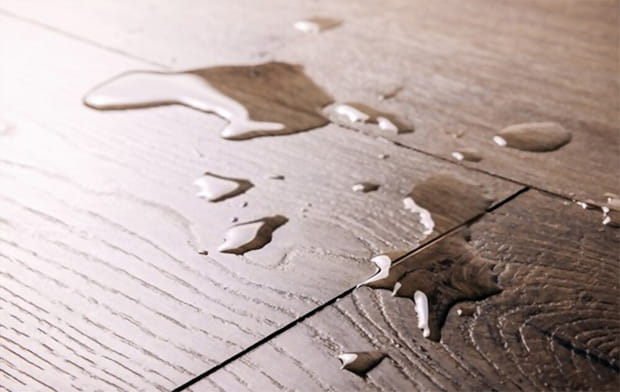
Sealing can't fix all the problems caused by water
Even when this problem doesn't occur, you should never let the seams of your laminate boards get wet. Adding a waterproofing sealant isn't necessary anyway since most manufacturers already do that to grooves and tongues with wax. The best time to provide additional sealant to those locking mechanisms is during the installation process.
Some people want to fend off common moisture damage (like wrapping boards and discolored finish) by applying a sealant. This is similar to the idea of adding another bandage on top of a broken one.
Moisture causes damage to your laminate flooring when you don't carry out proper cleaning practices, if there is seepage on the subfloor, or when your room has high humidity.
During the installation, you should have added a moisture barrier to the dry subfloor as suggested by your retailer or a professional.
When this moisture barrier goes missing, the subfloor is wet, or when there is already moisture damage on the floor, there isn't much a sealant can do for you. You may have no other option than to detach the floor to let the subfloor air-dry completely before installing the floor again.
This is the last resort. The issue may happen because you have subjected the laminate flooring to a high-moisture environment, such as a mudroom or basement. The best solution is actually replacing your flooring with a wholly new material that is more moisture-resistant.
Perhaps you are the culprit if you usually wet-mop the floor with excessive water. That is a recipe for disaster when it comes to materials like laminate. Sitting water is its enemy number one, and applying a sealant won't change the outcome much.
Another situation that sealants can't help much is when the planks move lengthwise and create gaps between the end joints.
To fix this, you will need to remove the baseboards first, then move the planks back to their positions with a hammer and a pull bar to get rid of the gaps. This is when you can use a silicone sealant to prevent the laminate planks from moving.
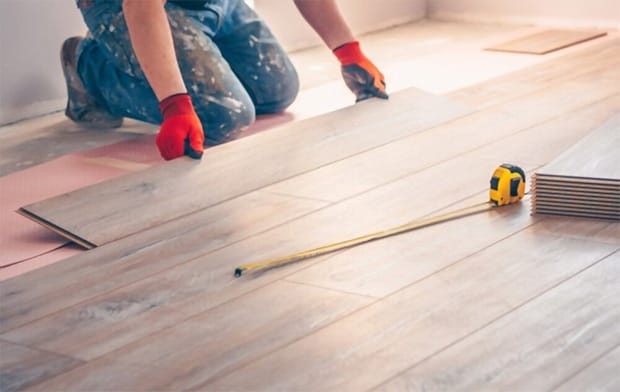
In some cases, you will need to remove the baseboards first
When You Can Seal Laminate Flooring
However, you can seal other parts of the flooring: including its perimeter. This is a recommended solution when you are worried water can get into the floorboards through those gaps.
It is a completely different matter. With the right amount of sealant, you can protect areas prone to moisture and spills and prevent moisture from seeping into the subfloor while still allowing the flooring to move freely. Think about this when you have a laminate floor in your bathroom or kitchen.
Spilled water and excessive humidity in those rooms can deal plenty of damage to your laminate flooring. However, they are water resistant to a certain extent, and you may need a humidity regulator to deal with it.
However, you should also pay attention to the timing. The best time is when you have just installed your laminate flooring and are about to install the baseboards.
A correct installation process will leave an expansion gap of about 1/4-3/8 inches around the room's edges. There may be spacers placed around the perimeter to maintain those gaps already. You must remove these spacers before installing the baseboards or sealing the gaps.
You can even seal the edges of your existing laminate flooring, even when it is several years old. However, it requires more time and effort because the baseboards will be needed to remove first.
If you have installed the flooring yourself, you can imagine how messy this process can be. In addition, the room may have complex edges with plenty of corners, making it hard to keep track of individual pieces.
You may have caulked the baseboards into the wall before. The tip is that you should number each of them so you won't lose track of them when removing and reinstalling.
➜ RELATED: Can You Put Laminate Floor Over Tile? Say No More, Try These 5 Easy Steps
What You Need
You will need the following items and equipment to seal the gaps on your laminate flooring:
- A vacuum cleaner/broom
- A mop
- Buckets of water
- A floor buffer (optional)
- Waterproof sealant for laminate flooring
- Protective gear
To pick the right sealant for your floor, make sure to consult the information and user manual provided by the manufacturer. They may tell you more about sealing the product.
Next, check whether the sealant you have is compatible with your laminate floor. For instance, laminate goes well with silicone caulk of all brands. There is also a wide range of colors. Pick one that can match that of your floor.
How To Seal Laminate Flooring
Preparation
Make sure the working area is clean before you take any action. Even simple small dirt particles can get in the way and obstruct the sealing.
This step is ignored by many, but cleaning your floor is key to maintaining its durability and allowing the sealant to work as expected. It would be a huge mistake if you repair or modify laminate flooring without cleaning it first.
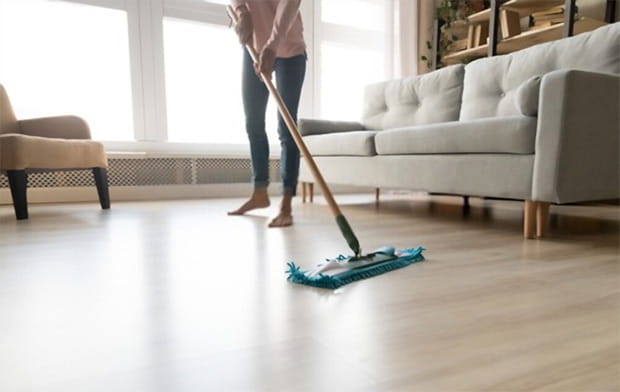
Mop your floor thoroughly before sealing
You should use a broom or vacuum to pick up as much dirt and dust as possible. Wet mopping is the next step in the routine, which will remove any dirt and residue left on the floor. Check out the best mop for laminate floors and the best vacuums for laminate floors.
Don't use too much water, just enough to wash away the dirt on the surface. Remember to use a rag to dry the floor afterward, too so it can be dry and ready for sealing faster.
Ensure the work area has ample ventilation. Open every door and window in the room. Use a fan to encourage airflow if necessary.
Wear safety equipment to protect yourself from potential hazards of the sealant. Protective gloves and old clothes are good and widely available items. Some chemicals commonly found in sealants can introduce bad reactions to your skin.
Mix the sealant before application, if needed according to its instructions. Most products require you to create a solution with clean water, and sometimes you need to mix two sealants together. Prepare multiple buckets or similar containers.
Apply The Sealant
Use a mop or rag to spread the mixture on your laminate floor. Ensure even distribution and every gap is covered. If you see a milky film, that is the sign you have used too much sealant on that spot. It would create a thick local bump that may need to be removed later.
Popular sealing products on the market include silicone caulk and polyurethane/urethane sealants.
With the latter, don't skip around the edges sitting against the wall. Instead, proceed with caution when you have to cover the area with baseboards later.
Pay close attention around your furniture, cabinets, and any water-related areas, including the areas around shower enclosures, bathtubs, sink bases, toilet bases, and plumbing fixtures, ... For your kitchen, around the sink and dishwasher.
If you need to cover your entire flooring, you will need something like polyurethane laminate floor sealant. You can use a paint roller or brush to apply it to individual planks. With silicone caulk, you will need to care about areas where the wall meets the planks and where the fixtures touch the planks.
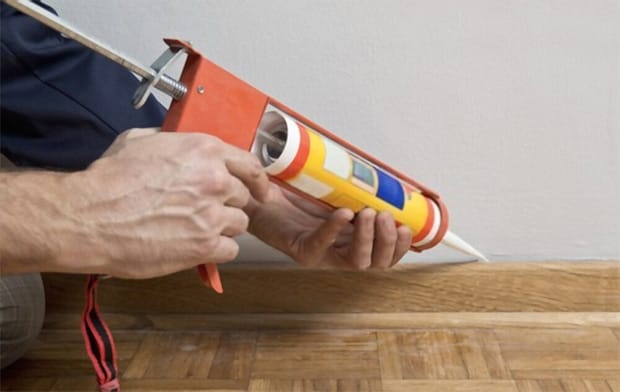
Silicone caulk is a popular sealant
Silicone caulk is much easier to apply. It comes in a tube, and you will need to cut the tip. Follow the seams and squeeze out just enough silicone. Use a putty knife to flatten it out and remove the excess sealant.
If you need to apply another layer of sealant, wait for the floor to dry entirely first. Otherwise, the additional layers won't be able to stick to the existing coats. Don't apply more than three layers of sealant. Too much of it doesn't bring much water resistance while making the floor finish look dull.
Dry The Sealed Areas
Be patient with this step, and it will pay off handsomely. Let the floor air-dry naturally until there is no liquid on its surface. Don't speed it up or you may need to start all over again. You should even wait for a while after each individual coating.
When you are done with sealing, use a buffer to wipe your floor in a circular motion to add shine to it. You can use a clean rag in place of the buffer. It isn't necessary, but you can scrub the floor after each layer too.
Conclusion
Learning how to seal laminate flooring can come in handy when you need to protect the edges against moisture and spills.
But in general, there is no need to do this on the entire floor. Laminate flooring already comes with a water-resistant coating, and your laminate floor waterproof sealer won't help much with whatever problem you are facing.
FREQUENTLY ASKED QUESTIONS
- 01. Is Laminate Flooring Waterproof?
-
While laminate flooring products are water resistant, not every of them is completely waterproof. In fact, most of them aren't.
The reason comes from how these floors are built. The fiberboard core is made from wood fibers, and naturally, there is already a high content of moisture in them. On top of that, joining systems like click-and-lock makes it challenging to create perfect seams.
- 02. Can You Waterproof Laminate Flooring?
-
Yes, there are plenty of things you can do after buying laminate planks and boards to make them waterproof. Additionally, you can also buy true waterproof variants, which have a thick coating on top and even around the edges.
- 03. Can You Paint Laminate Floors?
-
Totally, even though it isn't advisable. Painting isn't a good idea because the paint may scrape off easily and doesn't stick to the surface, making a big mess that you will have to deal with later.
➜ RELATED: 8 Best Vacuums For Laminate Floors That Actually Work
- 04. How To Waterproof Laminate Flooring?
-
Waterproofing laminate flooring can be a DIY project on your weekend. You can add a top coating of polyurethane, apply a laminate floor sealer to seal the locking systems, and put silicon chalk onto extension gaps.


